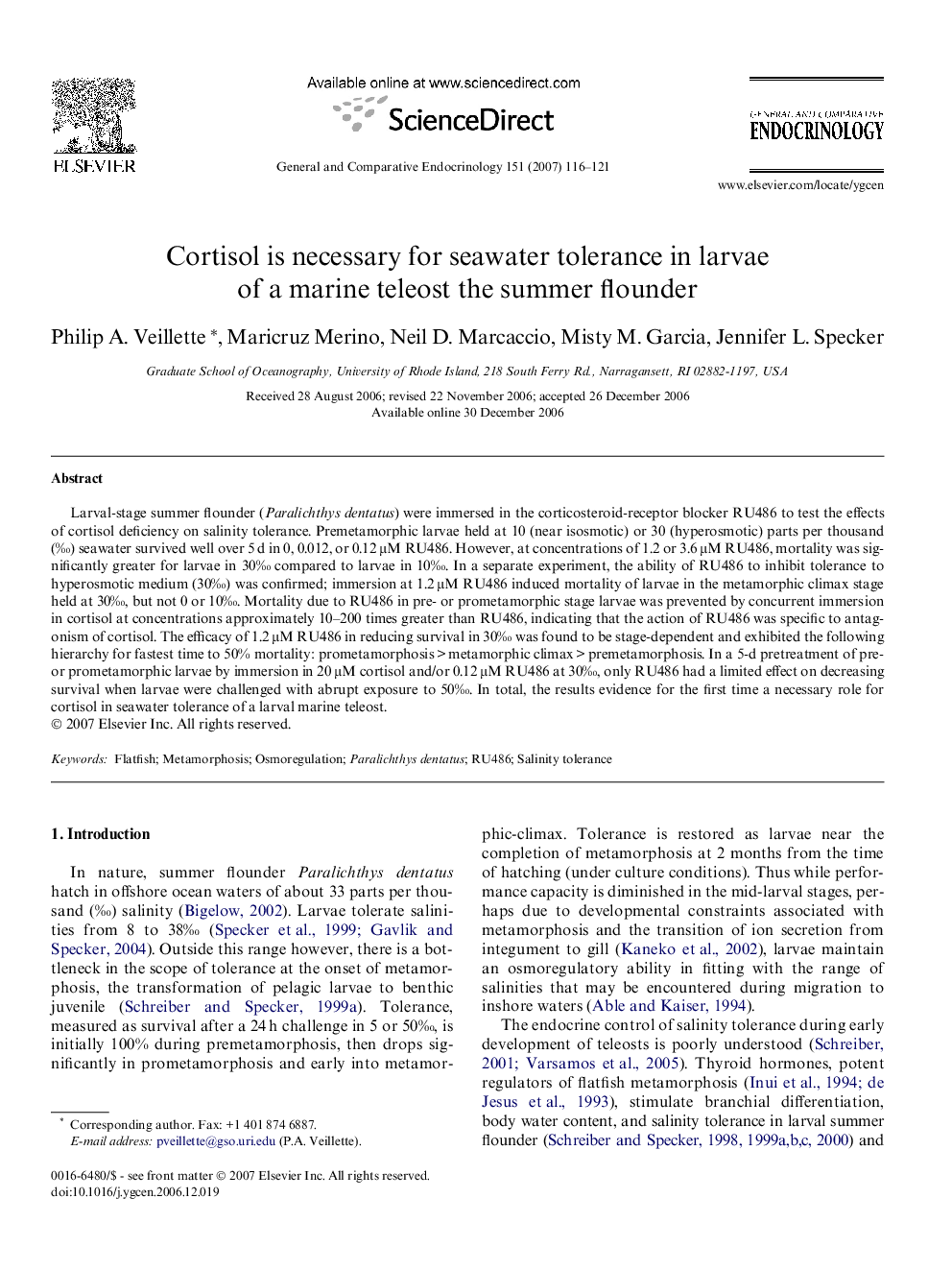| Article ID | Journal | Published Year | Pages | File Type |
|---|---|---|---|---|
| 2802141 | General and Comparative Endocrinology | 2007 | 6 Pages |
Abstract
Larval-stage summer flounder (Paralichthys dentatus) were immersed in the corticosteroid-receptor blocker RU486 to test the effects of cortisol deficiency on salinity tolerance. Premetamorphic larvae held at 10 (near isosmotic) or 30 (hyperosmotic) parts per thousand (â°) seawater survived well over 5 d in 0, 0.012, or 0.12 μM RU486. However, at concentrations of 1.2 or 3.6 μM RU486, mortality was significantly greater for larvae in 30â° compared to larvae in 10â°. In a separate experiment, the ability of RU486 to inhibit tolerance to hyperosmotic medium (30â°) was confirmed; immersion at 1.2 μM RU486 induced mortality of larvae in the metamorphic climax stage held at 30â°, but not 0 or 10â°. Mortality due to RU486 in pre- or prometamorphic stage larvae was prevented by concurrent immersion in cortisol at concentrations approximately 10-200 times greater than RU486, indicating that the action of RU486 was specific to antagonism of cortisol. The efficacy of 1.2 μM RU486 in reducing survival in 30â° was found to be stage-dependent and exhibited the following hierarchy for fastest time to 50% mortality: prometamorphosis > metamorphic climax > premetamorphosis. In a 5-d pretreatment of pre- or prometamorphic larvae by immersion in 20 μM cortisol and/or 0.12 μM RU486 at 30â°, only RU486 had a limited effect on decreasing survival when larvae were challenged with abrupt exposure to 50â°. In total, the results evidence for the first time a necessary role for cortisol in seawater tolerance of a larval marine teleost.
Related Topics
Life Sciences
Biochemistry, Genetics and Molecular Biology
Endocrinology
Authors
Philip A. Veillette, Maricruz Merino, Neil D. Marcaccio, Misty M. Garcia, Jennifer L. Specker,
